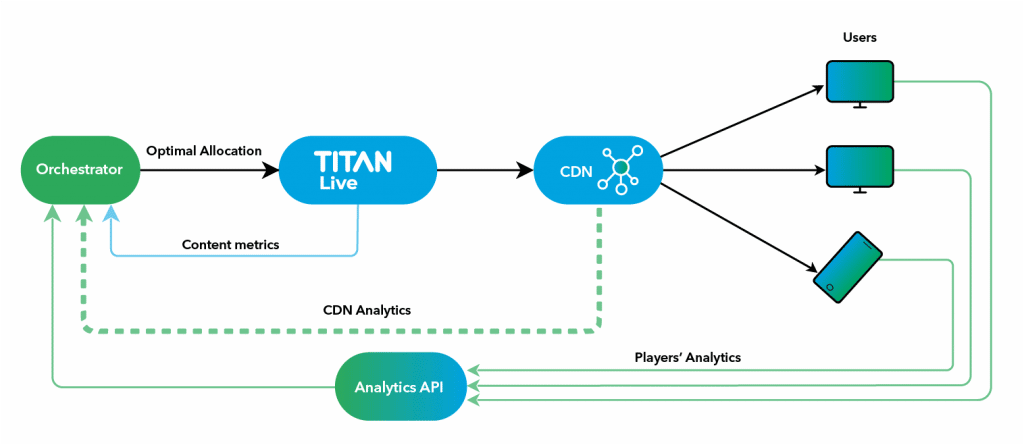While the summer of 2022 has been the hottest on record, it might be the coolest of the rest of our lives. Welcome to the world of global warming. What can the streaming industry do to limit its impact and keep global warming in check? Ever heard of Audience-aware streaming?
In Part 1 of our blog series on audience-aware streaming, we looked at how encoding can help reduce the energy consumption (and therefore the environmental impact) of streaming. Now, let’s look at the role of the CDN.
To ensure the smooth delivery of high-quality video, most companies providing a streaming service will equip their CDN for maximum capacity. They want to be sure that during peak viewing times, the quality will be top-notch. But of course, peak viewing times are rare. There are the peaks in a day. And there are those once-a-year or even once-every-four-years (such as the world cup), where the peaks are much higher. Those are the ones that dictate the CDN resource requirements. Thus, about 94% of the time, the CDN will be used under-capacity — and resources will be wasted.
There is a way around this. In an elastic CDN, the CDN gets information about which CDN nodes are being solicited. Furthermore, the CDN is cloud-native and can allocate resources to different functions within minutes. It uses the information to allocate only the necessary resources for the CDN function. And this, while the other resources can be allocated to different functions, such as file transcoding. When necessary, it can temporarily expand the CDN to meet peak requirements. It can then immediately go back to its previous size. This way, waste is eliminated. And requiring fewer servers translates into a more sustainable streaming service.
Audience-aware Streaming: Linking Compression and CDN for Maximum Efficiency

Audience-aware streaming equals the result of audience-aware encoding combined with an audience-aware elastic CDN. In this way, it is indeed possible to reduce the carbon emissions of video streaming, while simultaneously improving the audience’s quality of experience. In fact, this is what Ateme already achieved over a three-year period (2018 to 2021): a 2/3 reduction in power consumption accompanied by an increase in streaming quality. Now, as the only company to master the entire video-delivery chain — from encoding all the way to the CDN — we can go even further. By creating a feedback loop between what is happening in one part and what is happening in the other, we are able to identify and eliminate waste.
So streaming service providers can reach top results, right when they need it, giving their viewers the most seamless, fastest viewing experience. Not only that, but the environment also benefits from reduced emissions and power consumption, and therefore less waste. A win-win for everyone.
We cannot undo the damage that has already been done. But with audience-aware streaming, we can definitely do something to reduce further damage.
If you want to find out more, make sure you reach out to the Ateme experts at: experts@ateme.com.

